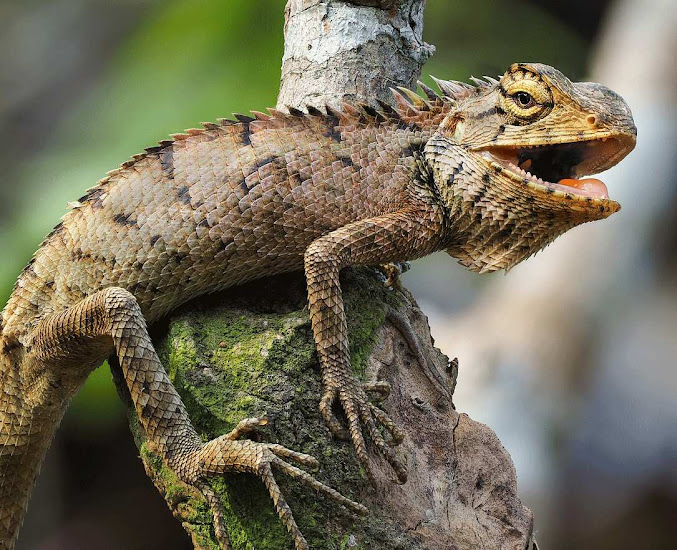Mexican Tejon
The Mexican Tejon
One of the coolest Mexican raccoon realities is that they are known as "snookums bears" among a large group of different names, yet the specialized term for this charming creature is coati or coatimundi.
There are four types of coati, the South American, tracked down in both Focal and South America, the eastern mountain, tracked down in Venezuela, the western mountain, tracked down in Ecuador and Columbia, lastly the white-nosed coatimundi.
The white-nosed coati is the species most frequently alluded to as a Mexican raccoon since it ranges across Focal America Mexico and the South Western US
Mexican raccoons are profoundly keen creatures about the size of an exceptionally large house feline.
They have a cover like the shading on the face, and rings around their tails, and are individuals from the family Procyonidae, alongside raccoons, kinkajous, and ring-followed felines.
They live in extremely dynamic gatherings of up to forty people, and invest the greater part of their energy scavenging on the ground, despite the fact that the home and stay-in-bed trees.
They are profoundly friendly, lively, and loving with one another, and stay in touch with various whistles, screeches, jabbers, and grunts.
Mexican raccoons have surprisingly lengthy noses that are entirely adaptable. The tip of the nose can really twist from one side to another at almost 90 degrees.
They utilize their strong, long front paws and pig-like nose to uncover bugs, reptiles, and pretty much whatever else eatable that they can track down in the ground.
The Mexican raccoon, or white-nosed coati, is around 12 crawls at the shoulder and weighs somewhere in the range of 5 and 20 pounds.
The South American coati is marginally more modest and might be rosy in variety. The nose is more obscure in variety, and they might not have any rings on their tails.
Both the mountain types of coati are more modest still, more like a squirrel, going from 3 to 10 pounds. They have obvious covers and ringed tails.
Every one of the animal varieties is a forager who will eat practically anything from leafy foods to fish and little birds.
Bugs are a staple, since they chase generally on the ground, rutting with their nose, and will consume slugs, scarabs, worms, and crickets as well.
Spineless creatures, for example, tarantulas and scorpions are on the menu likewise, and coatis appear to be safe for their nibbles and stings.
The Mexican raccoon is once in a while kept as a pet and might be extremely warm and perky.
They are incredibly wise and inquisitive and can be prepared to utilize a litter skillet, so there is a compulsion to provide them with the run of the house.
In any case, remember these bustling creatures have a strong desire to dig, since that is the manner by which they gain their food in the wild, and they might cause a lot of harm in the normal home, pulling up floor tiles and covering.
What Does A Mexican Tejon Look Like?
Until I got to Mexico (I go down there in the winters from Canada), I had no clue about what this odd-looking creature was, however at that point I continued to see increasingly more of them while making the rounds. They were plainly not anybody's pets (ie. wild), but didn't appear to be hazardous, and individuals didn't appear to mind them.
Somebody let me know it was known as a "coatimundi", "coati", or "Tejon" in Spanish.
I was simply circumventing referring to it as a "Mexican raccoon thing". They are otherwise called colugo, moncún, or here and there "hoard-nosed coon".
This happens when you feel free to take care of one coati. You wind up taking care of multiple! This is my better half holding the feed pack.
Mexican Tejon Behaviour
Coatis travel in female bunches of up to 25 creatures. The female packs incorporate the child coatis until they're no less than 2 years of age.
When they hit that achievement age, the guys will be constrained out of the gathering by the females. They'll possibly return when it's the ideal opportunity for rearing.
The coatimundi has specific commotions and stances that convey their mindset. They utilize grunting, snorting, or twittering commotions as signs of various states of mind contingent upon their ongoing action.
They are additionally extremely inquisitive animals. Look at this video where a coati moves toward a camera to see what it is.
You can't hear their commotions with the music in this video playing, however, they make a lot of clamors in the event that you give close consideration.
10 Facts About Mexican Tejon
· Coatis frequently hold their tails erect in order to hold troops of coatis together in tall vegetation.
· These smart "hoard nose" raccoons have an entirely adaptable noses.
· Coatis are omnivores and their eating regimen comprises fundamentally of ground litter spineless creatures, like a tarantula, and organic products. They additionally eat little vertebrate prey, like reptiles, rodents, little birds, birds' eggs, and crocodile eggs.
· They can be kept as pets and littering training them is conceivable. Remember that they are "wild" and not normal for the canine and felines in our homes today.
· The Mexican raccoon is officially known as the coati
· There are four types of coati
· The Mexican raccoon is the species known as the white-nosed coati
· Coatimundi, quasi, Tejon, and hoard-nosed coon are other names
· Tarantulas are a typical piece of the eating routine of a coati
· Coatis are individuals from the raccoon or procyonid family










